English Farmer Comes Across Surprising Discovery While Hunting for Lost Hammer
In 1992, a farmer in England lost his hammer and asked his friend to help him find it with a metal detector. Little did they know, this search would lead to the most significant Roman treasure ever found in Britain. The field yielded 15,000 coins and a substantial amount of gold, worth millions of dollars.
This fantastic find provides a glimpse into the past and the rich history of the Romans in Britain. It also gives us an opportunity to learn more about the life and culture of that period. Who knows what other hidden treasures are waiting to be discovered?
The Accidental Discovery
A farmer named Peter Whatling was digging on his property in eastern England when he suddenly lost his hammer in the dirt. Not knowing what to do, he reached out to his friend and neighbor Eric Lawes for help. Little did he know, this simple act of friendship would lead to a historic discovery.
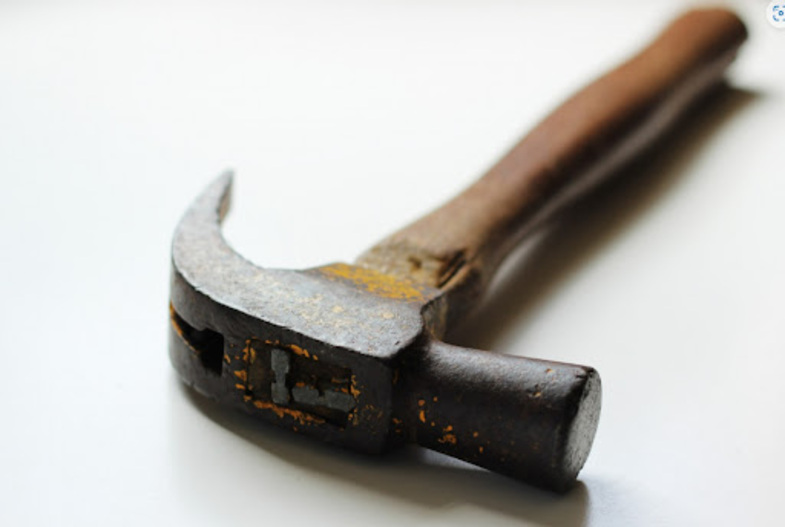
Source: CC0 Public Domain
While searching for the lost hammer, Lawes stumbled upon the largest hoard of ancient Roman treasure ever found in Britain. Who would have thought that a lost hammer could lead to such an incredible find?
A Gardener’s Lucky Find
Eric Lawes was a gardener in Hoxne, Suffolk who had recently retired. He was gifted a metal detector, which he enjoyed using to help out friends. When he received a call about a lost hammer, he eagerly set out with his detector to help find it.
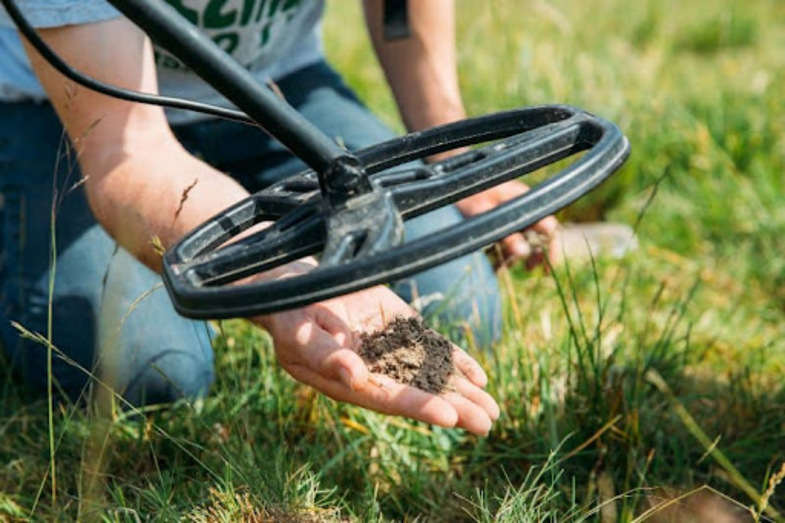
Source: Detecting School
As he swept the field with his metal detector, he stumbled upon a strong signal. Excited to have found the lost hammer, he began digging. But to his surprise, he discovered something much more valuable than a simple tool!
Unearthing a Fortune
Lawes couldn’t find the hammer, but what he uncovered was much better. While digging, he found several silver spoons and some ancient gold coins. And that’s not all! He also uncovered some beautiful pieces of gold jewelry. Lawes was overjoyed and filled two grocery bags with his treasures.
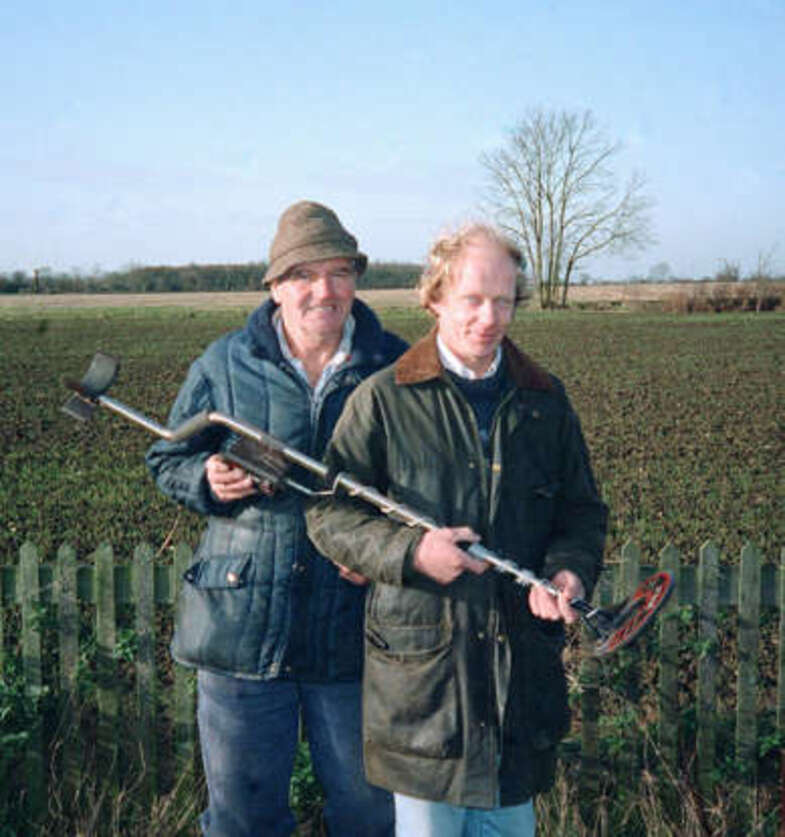
Source: ribalych.ru
But this was just the tip of the iceberg. Lawes knew that there was so much more hidden treasure to be found. He never expected to discover such a bounty and was amazed at his lucky find.
Informing the Experts
Lawes stumbled upon something truly special and instead of keeping it all to himself, he reached out to some experts. He knew that his discovery had some historical value and wanted to make sure it was handled properly.
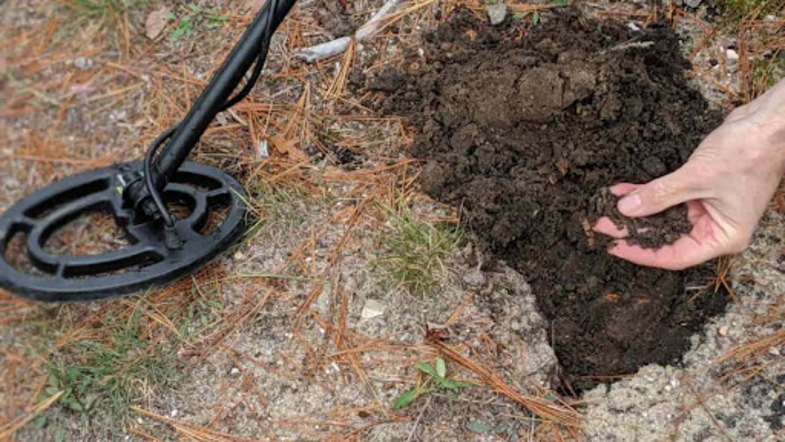
Source: Metal Detecting Tips
He and Whatling took the two bags and contacted the relevant authorities, including the landowners, police, and the local archaeology society. They decided to wait for the archaeologists to arrive and handle the situation, avoiding any further excavation of the treasure.
A Quick but Careful Dig
The Suffolk Archaeological Unit, led by Jude Plouvier, paid a visit to the site the next day. These archaeologists, armed with metal detectors, were on a mission to safely remove the treasure from its dirt-covered resting place.
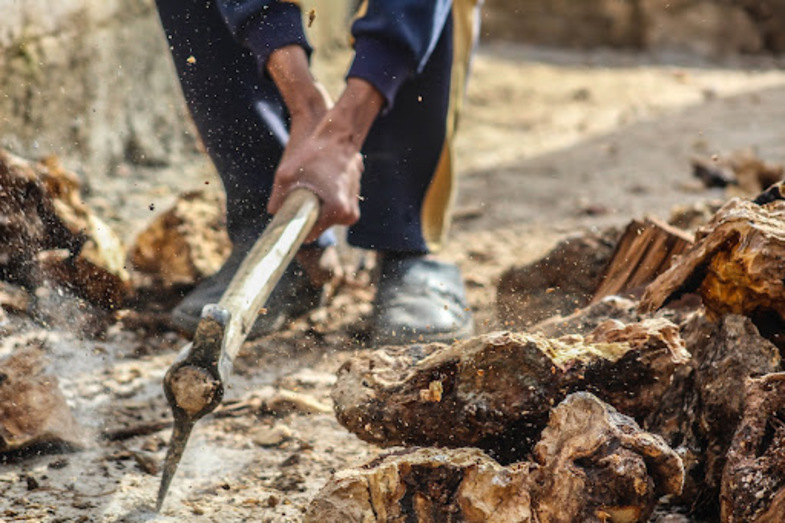
Source: weeklyreviewer.com
With the help of their trusty metal detectors, the team searched a 98-foot radius around the spot to get a better idea of the treasure’s size. After realizing the scale of their discovery, they quickly got to work and excavated the entire hoard in just one day.
The $4.3 Million Find
Lawes had made quite the discovery when he stumbled upon a treasure trove. But, it turns out, he was only scratching the surface. The main bulk of the hoard was found in a large oak chest, with smaller boxes filled to the brim with precious metal objects.
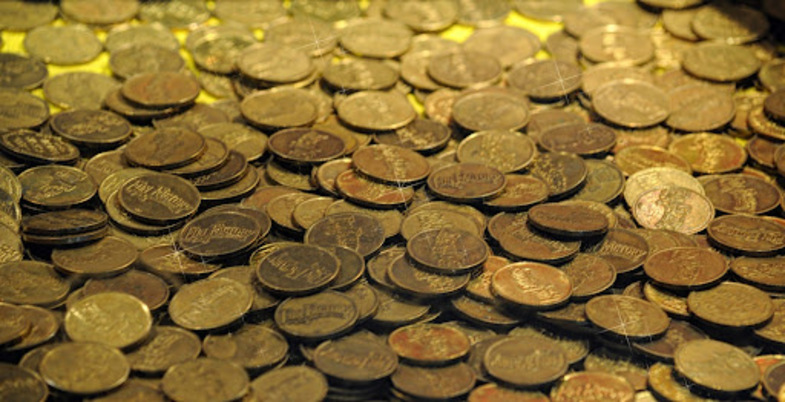
Source: CC0 Public Domain
Archaeologists were amazed to find 60 pounds of gold and silver, including 200 gold pieces of jewelry, and over 15,000 Roman coins. If we were to translate this into modern money, the treasure would be worth an estimated $4.3 million. Not too shabby for a chance find!
Biggest Roman Treasure Discovery in Britain
Among the 40 treasure hoards discovered in Britain, the Hoxne Hoard stands tall as the largest one ever found. According to researcher Rachel Wilkinson, it’s also the biggest Roman treasure discovery to date.
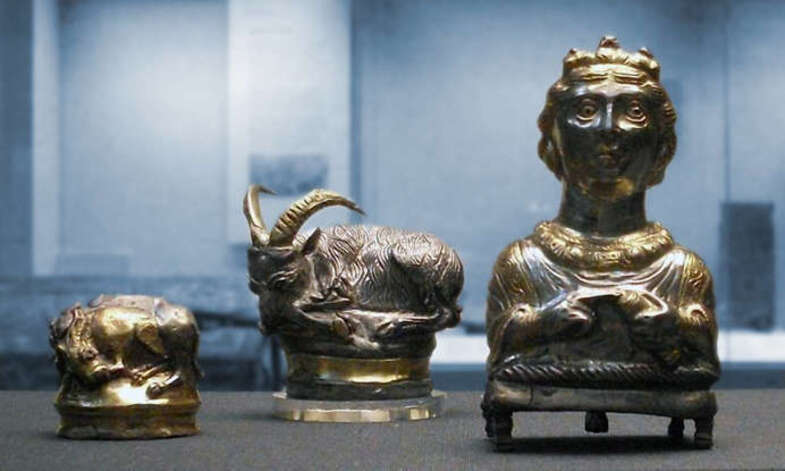
Source: The Land/Wikipedia Commons
Fortunately, the Hoxne Hoard was given special treatment during its excavation. Unlike other ancient treasures that often get quickly pilfered, the Hoxne Hoard was handled with care. This means researchers were able to get a closer look and learn more about these fascinating objects.
Lawes’ Reward
Lawes was richly rewarded for reporting the treasure. The Treasure Valuation Committee evaluated the worth of the treasure to be £1.75 million ($2.43 million) in 1993 and that’s exactly what Lawes got. He kindly shared the reward with Whatling.

Source: weeklyreviewer.com
After all the excitement, Lawes eventually found the lost hammer. Whatling then donated it to the Hoxne Hoard museum, named after the town near where the treasure was discovered. Whatling made the generous gesture to share a piece of history with others to enjoy.
The Roman Empire in Crisis
Rome was facing a difficult period in 450 AD under Emperor Theodosius. Christianity became the only accepted religion, causing conflict within the empire as many still followed polytheistic beliefs. Meanwhile, various civilizations were invading, particularly in Britain.
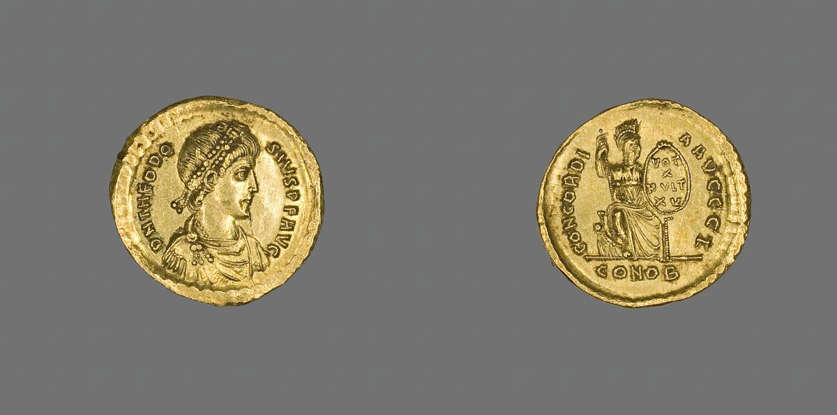
Source: nocache.www.artic.edu
Life in the British Isles for Roman citizens was challenging during this time. Attacks from the Saxons, Picts, and Anglos were frequent, forcing people to conceal their valuables for protection. As reported by Smithsonian Magazine, these citizens were essentially left to fend for themselves.
Hoards Equal Hordes
The “hoards equal hordes” hypothesis emerged as raiders from Scotland and Ireland invaded Britain. Historians suggest that the invasion made the British so scared of future attacks that they buried their valuables to protect them.

Source: nocache.www.artic.edu
The Romans in Britain, known as Romano-Britains, buried more treasures than almost any other place in the world during this time. It was likely that the owners of these treasures believed they could retrieve them later, but that was not to be.
Who Owned the Hoxne Treasure?
The Hoxne Hoard is a mystery that has yet to be solved, but we have a few clues to go on. One of the items in the hoard, a golden bracelet, is inscribed with “Use this happily Lady Juliane” in Latin. Another artifact bears the name “Aurelius Ursicinus.”

Source: wire.insiderfinance.io
There is also much speculation regarding the Empress Pepper Pot, which some believe was a depiction of Lady Juliane. While the identity of the original owners remains a mystery, these small hints give us a glimpse into the lives of the people who once possessed the Hoxne Hoard.
Clipped Coins and a Declining Empire
According to Roman archaeologist Peter Guest, the Hoxne Hoard may hold clues about the decline of Rome’s control over Britain. The practice of “clipping” coins was a common way for the Brits to assert their independence from Rome. By reducing the size of Roman coins by about a third, they effectively created a new, local currency.
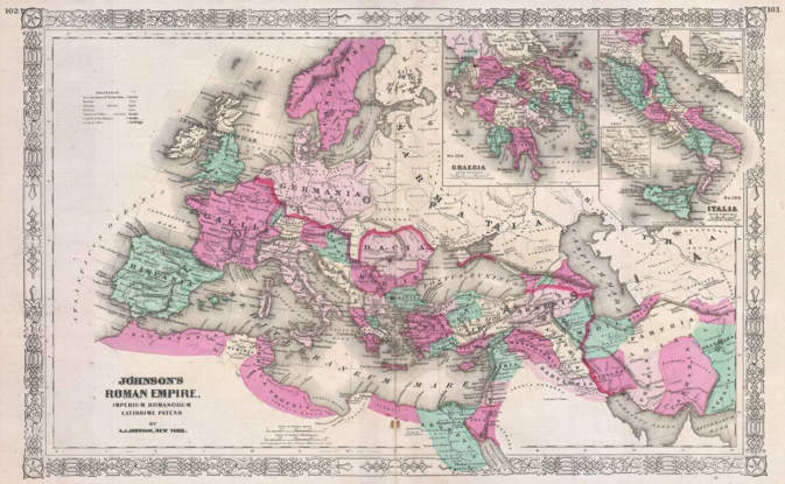
Source: cookingideas.es
But why were these clipped coins kept instead of being spent? Some historians speculate that the Hoxne hoarders held onto these coins for sentimental reasons, as reminders of their former connection to the mighty Roman Empire.
A Global Sensation
The Hoxne Hoard was a big deal when it was found, and people were talking about it everywhere. The Sun even ran a fun competition to encourage people to learn more about history. They offered a free metal detector to the first person who could correctly answer the question “Who built Hadrian’s Wall?”

Source: cookingideas.es
However, the increased attention to metal detection also caused a bit of a problem. People flocked to Suffolk with their metal detectors in hopes of making their own big discovery, which became a bit of a hassle for the local area.
A Second Excavation
The discovery of the Hoxne Hoard caused a stir and many people took to metal detecting in the area, despite it being illegal. But in 1994, the Suffolk County Council Archaeological Service got wind of the treasure hunting and decided to take action.
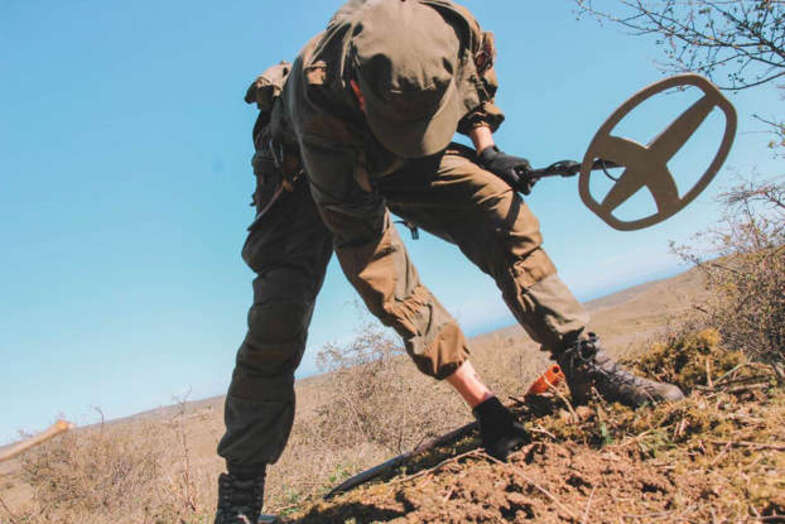
Source: m.lenta.ru
They launched a second excavation to protect any pieces of the hoard that could provide valuable historical information. The archaeologists meticulously re-excavated both the original hoard hole and the larger surrounding area to ensure that no important artifacts were left behind.
More Treasures
In 1994, a team of archaeologists dug deeper into the Hoxne Hoard discovery site and uncovered an extra 335 treasures from the Roman Empire. The 11,000 square feet excavation revealed a plethora of coins, as well as some box fittings.

Source: alo.rs
Interestingly, it’s believed that the coins were dispersed due to east-to-west plowing by farmers, but the earlier north-to-south plowing didn’t cause any displacement. The team also came across some post holes that date back to the Bronze and early Iron Ages, but they had no relation to the Hoxne Hoard.
The Hoxne Hoard’s Mysterious Past
The Hoxne Hoard was a tricky puzzle for historians to piece together. With limited organic materials in the treasure, they were unable to use radiocarbon dating to determine its age. To get around this, they relied on the inscriptions on the coins to give them a rough idea of when the treasure was buried.

Source: bridgemanimages.com
Based on their findings, the Hoxne Hoard was believed to have been buried between the reigns of Valentinian I and Honorius, around 408 or 409 AD. However, not everyone agrees with this assessment. Some believe that the coins were made, or buried, after Britain’s break from the Roman Empire.
Not Just Coins
Not only does the Hoxne Hoard include coins, but it also boasts 29 pieces of gorgeous gold jewelry. These pieces include everything from rings to necklaces, with styles suitable for both men and women. The jewelry is made of the finest 91% gold or 22-carat gold, and some pieces feature silver and copper designs.
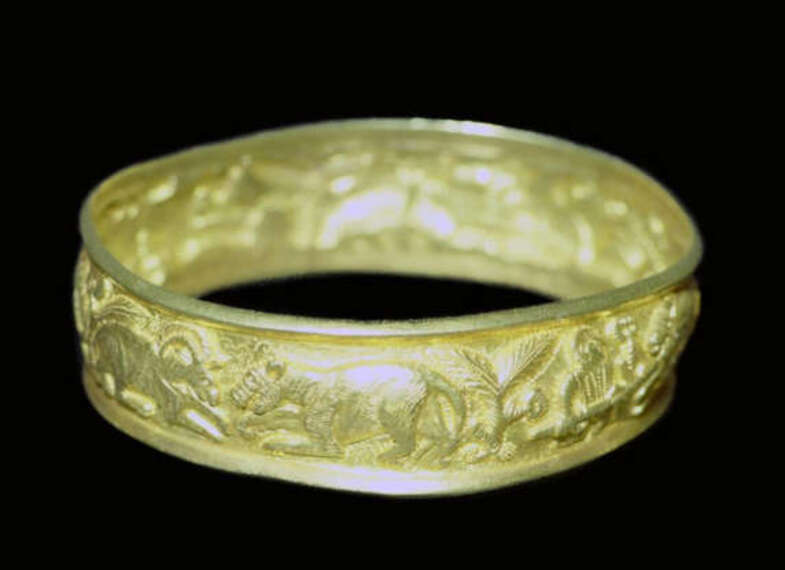
Source: sfgate.com
Experts have uncovered some fascinating details while examining the jewelry. Some inscriptions hint at who the original owners might have been. And, they discovered four pairs of matching bracelets, which is quite uncommon in ancient Rome. Perhaps these bracelets were owned by two pairs of women who had matching styles.
The Treasure Act of 1996
The Hoxne Hoard was declared a treasure trove by a Coroner’s inquest in 1993. Treasure troves are usually hoards that were buried to be recovered later. Although there’s no legal obligation to reward the discoverer, the Crown usually does so with an amount equal to the value of the treasure.
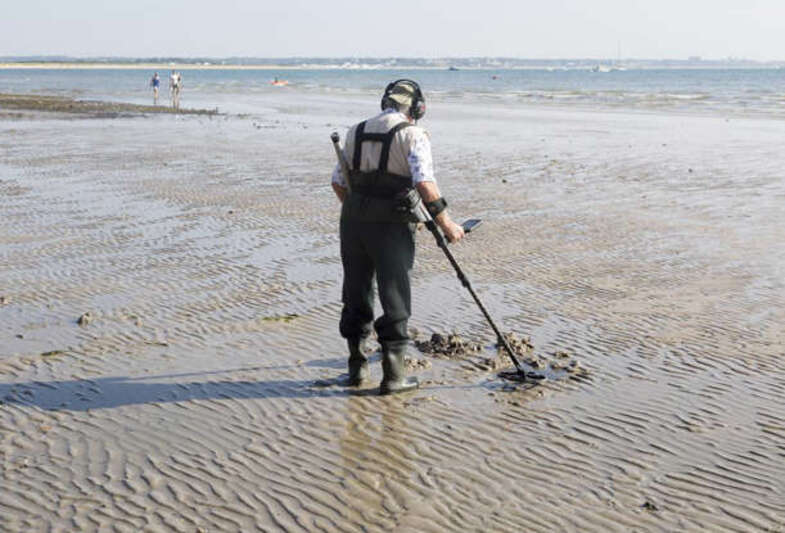
Source: sfgate.com
The reward for the Hoxne Hoard was split between the discoverer and the farmer who owned the land. This event inspired the passage of the Treasure Act in 1996. The act stipulates that any reward from a treasure trove can be split between the discoverer, tenant, and landowner.
The Empress Pepper Pot
The Hoxne Hoard was a treasure trove of ancient artifacts, but one of its most prized possessions is the Empress Pepper Pot. This silver and gilded spice shaker is shaped like a woman and is thought to have been used to dispense peppercorns and other spices.
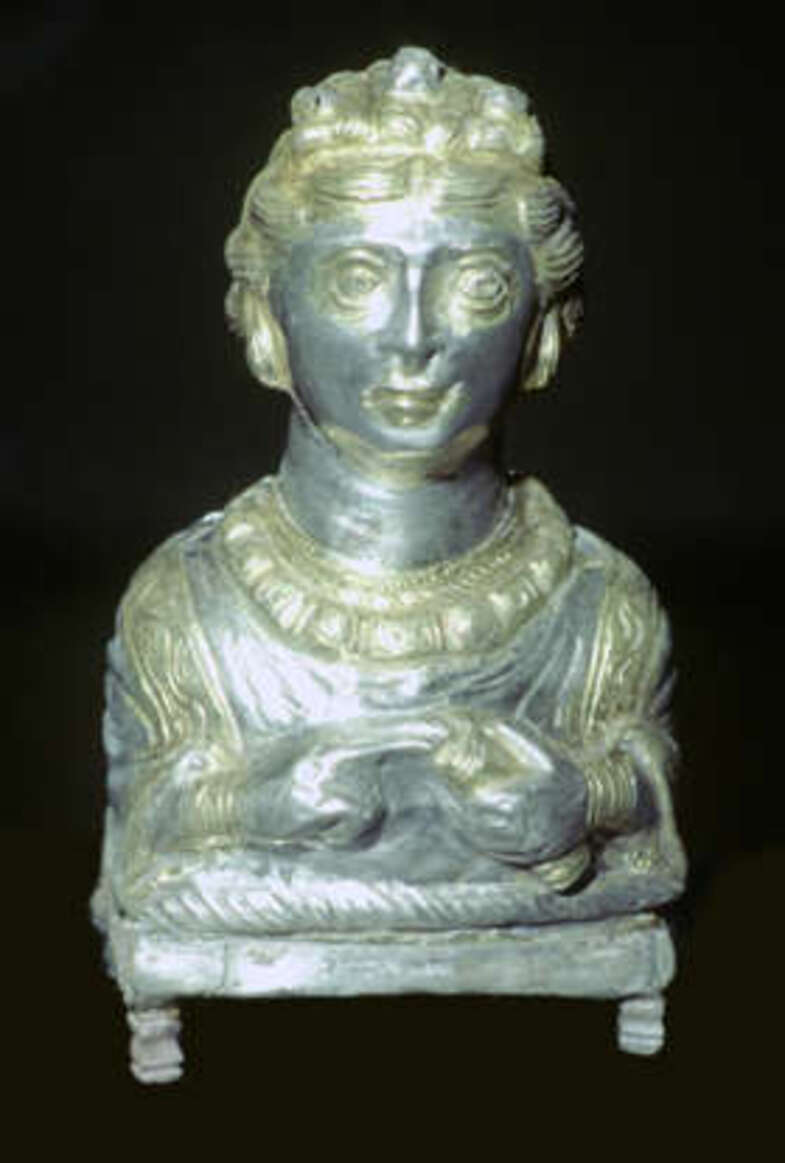
Source: akga.orangesafebox.com
Despite its regal moniker, historians believe the Empress Pepper Pot doesn’t depict any goddess or ruler. She does, however, hold a mysterious scroll. Out of the four rare pepper pots found in the Hoxne Hoard, the Empress Pepper Pot was the most intricately designed.
Where Were the Treasure’s Owners From?
The Hoxne Hoard was hidden far from civilization, but historians have a pretty good idea of where the person who buried it lived. Old maps and records point towards Scole, a small settlement located two miles away from Hoxne and situated at the crossroads of two roads.
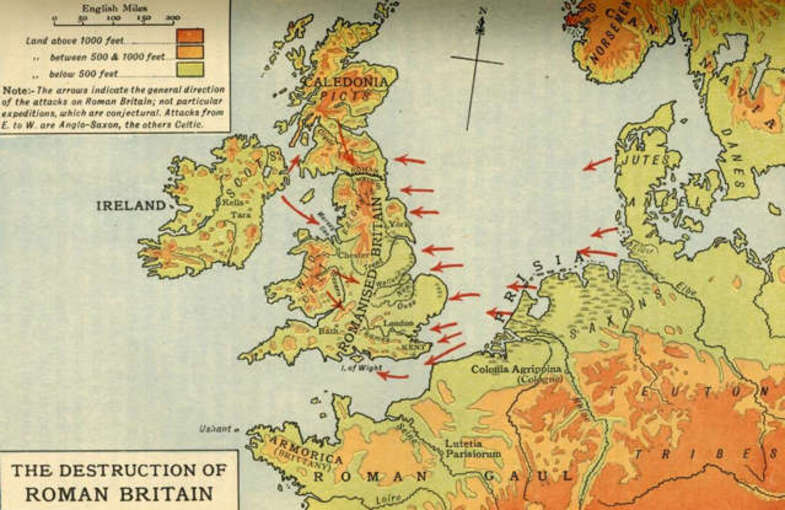
Source: pt.starsinsider.com
Despite the lack of any fancy Roman buildings found around Hoxne, it’s believed that the buried treasure was just a tiny fraction of the owner’s wealth. It’s possible that the field where the hoard was buried was used as a pasture back in the day.
Villa Faustini
According to some, the treasure might have come from the Villa Faustini. This villa was mentioned in an ancient record called the Antonine Itinerary, which was created for the first Roman Emperor, Caesar Augustus. The theory goes that engravings on the spoons that read “Faustinus” might be a clue about the villa’s existence.
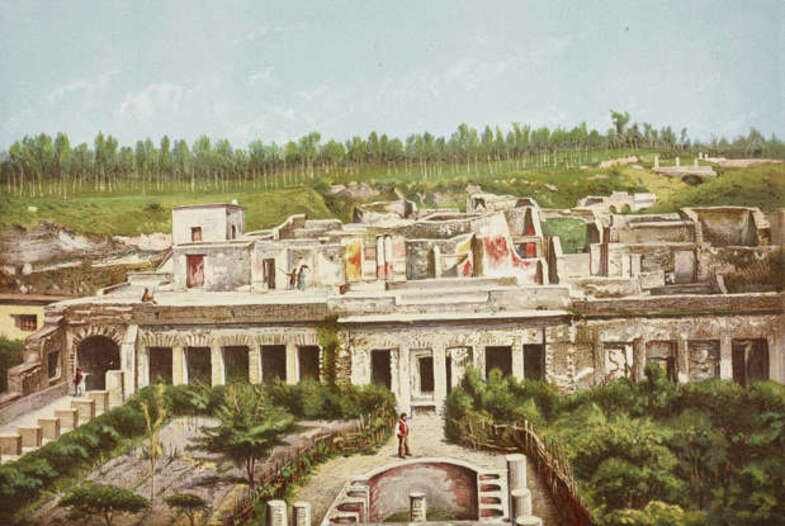
Source: worldcrunch.com
However, the exact location of Villa Faustini remains a mystery. Some believe it might have been on Pye Road or in Scole. All we know is that whoever buried this treasure was definitely living the good life in a villa!
Organic Treasures
The Hoxne Hoard was not only comprised of coins and jewelry, but also some organic items. From bones of animals to pieces of wood, the hoard had a mix of different materials. It’s uncertain if the bones were placed there deliberately.
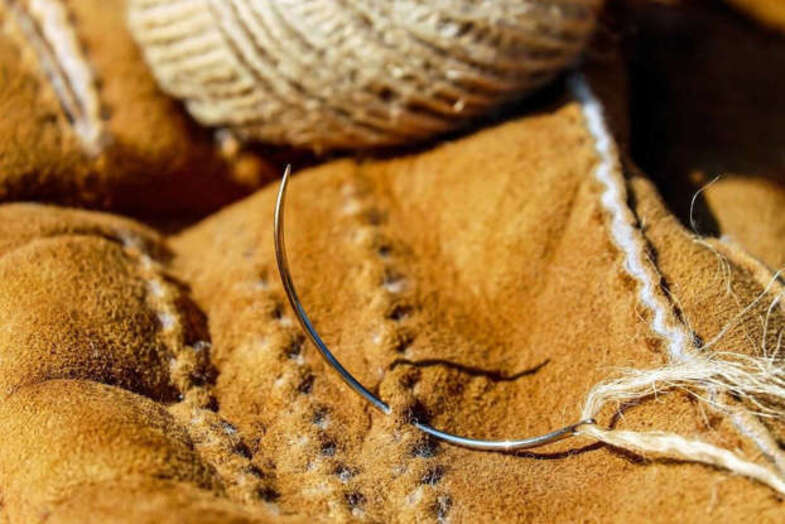
Source: Couleur/Pixabay
Among the organic materials, the wooden boxes and fragments were of particular interest. Made from cherry trees and yew native to Britain, the boxes were used to store silver utensils, carefully packed between layers of straw and linen. Sadly, much of the leather and some other materials were too degraded to be studied.
Unusual Mending Techniques
In their investigation of the Hoxne Hoard, archaeologists employed X-ray fluorescence to shed light on the composition of the metal, ceramic, and glass objects. To their surprise, the results revealed that some pieces had undergone repair using an unusual material – mercury!
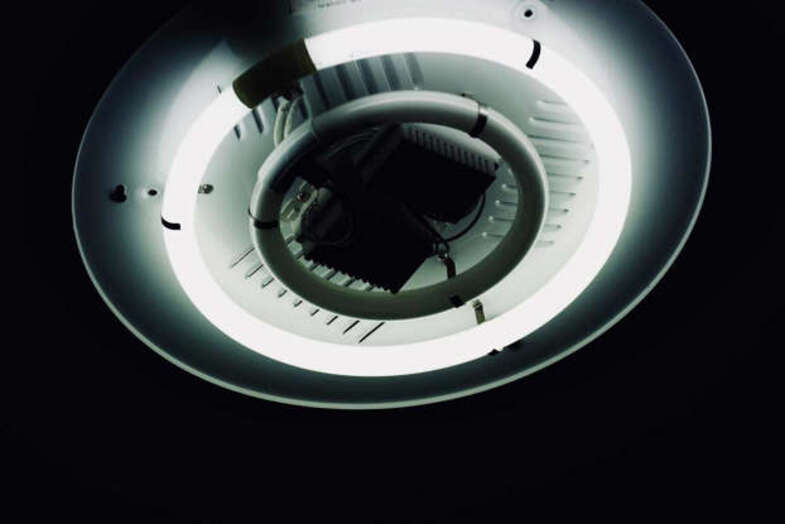
Source: Ray Rui/Unsplash
One bowl, in particular, showed signs of being mended with mercury solder. This is a highly unusual method of repair, as most Romans would have used lead sulfide instead. Another piece, a silver tigress, had metals that were joined together using silver sulfide. The reason behind these unorthodox repairs is still a mystery.
The Power of Jeweler’s Rouge
To the archeologists’ amazement, the Hoxne Hoard featured one of the earliest known examples of jeweler’s rouge, a mixture used to polish metals. The magic ingredient? Iron oxide, also known as rust.
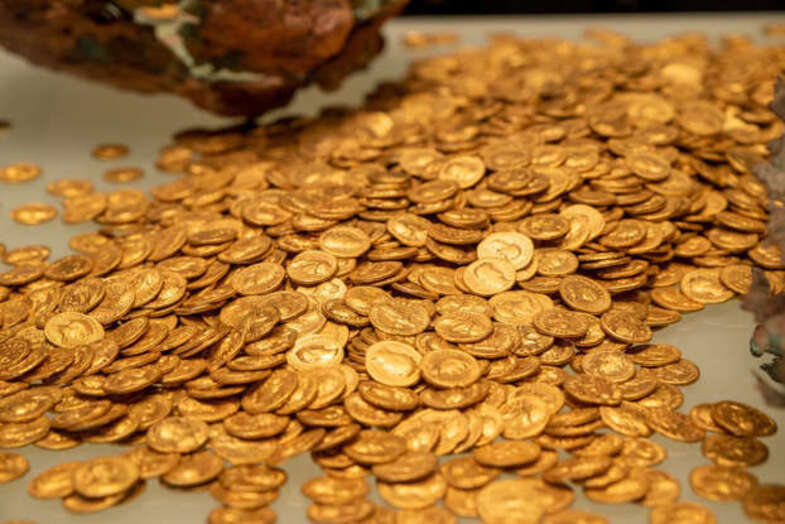
Source: parkerlighting.com
But that’s not all! Researchers discovered a golden armlet in the hoard with traces of hematite on the reverse side. They suspect that this mineral was part of a jeweler’s rouge formula, making it the oldest recorded instance of the technique in Roman times.
The Missing Pieces
The Hoxne Hoard is an exciting discovery of old Roman-era treasures, featuring a range of everyday items from spoons to toiletry items. But some big pieces seem to be missing from the hoard. Archaeologists have a theory about what could have happened to them.
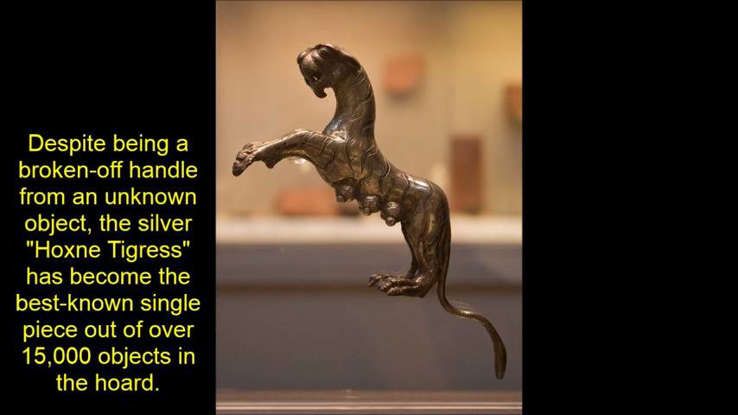
Source: en.wikipedia.org
One of the most intriguing finds in the hoard is a tiny silver tigress. The experts believe that this cute creature was once a handle for a large vase. But where did that vase go? Did someone dig it up and take it away? Did it never get buried with the rest of the hoard?
The Hoxne Hoard’s Legacy
The Hoxne Hoard was a turning point in the relationship between metal detectorists and archaeologists. Eric Lawes’ decision to hand over the treasure to authorities, intact and unaltered, helped earn the trust of archaeologists. The Treasure Act of 1996 made it easier for everyday people to turn in their findings and receive a reward, while media attention on the Hoxne Hoard sparked interest in metal detecting.
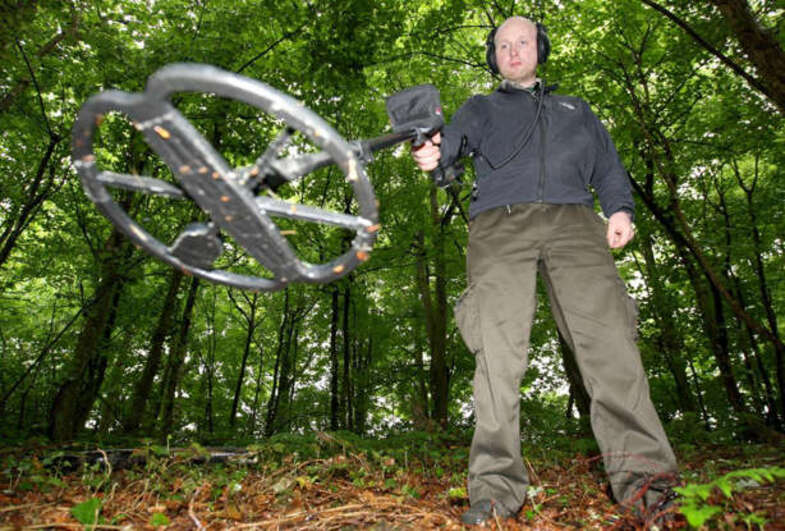
Source: en.wikipedia.org
Who knows what other treasures are waiting to be uncovered? With more people equipped with metal detectors, the chance of finding another remarkable hoard is always a possibility. So, get ready for a treasure hunt and who knows, you might be the next lucky one to uncover something special!
